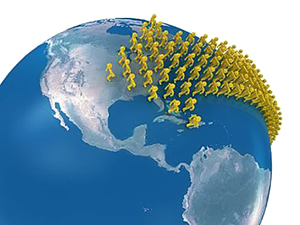How can that be! We are told over and over that refugees entering the US are thoroughly screened in advance and that refugees are not a security risk. But here is a short news account from Nepal that dispels that idea.
Imagine the surprise of the family to learn that someone using Dad’s identity has already been resettled in the US, and he isn’t even Bhutanese. We are supposedly resettling 60,000 Bhutanese from these camps over the next couple of years. But, oh well, these things happen says the IOM (International Organization of Migration).
Oh, one more thing, just a reminder that we do not pick our refugees they are chosen for us by the likes of the United Nations and the IOM (whoever the heck they are!). See an earlier post warning about this—fakes in the Bhutanese camps.
Association of Press Freedom Activists (APFA) Bhutan has said a non-Bhutanese refugee has been resettled in United States, using fake identity as a Bhutanese refugee from Beldangi 2 camp in Jhapa district.
According to a statement by the association, a non-Bhutanese has been sent to US after completing resettlement process at the International Organization of Migration (IOM) in the name of Padam Lal Poudel, 52, from Beldangi 2, Sector D/2 Hut No 24.
The association quoted a family member of Poudel as saying, “The inquiry section of IOM confirmed that someone matching my father’s information has
already got resettled in the US.”
The matter came to light after Poudel’s son inquired at the IOM to know why his father’s resettlement process had been delayed while other families whose interviews began at IOM along his family already left Nepal.
He was informed by the people at IOM reception that there are many such cases.
There were media reports saying some non-Bhutanese have been making efforts to go US under disguise.
APFA said IOM offices in Damak and Kathmandu, UNHCR office in Kathmandu and UN embassy in Kathmandu denied talking on the issue.
The association demanded that original identity of the person being resettled be made public by the concerned agencies – date of his departure from Nepal, place where he has been resettled along with photo – and urged IOM, UNHCR and US embassy to take precautionary measures to ensure that non-Bhutanese are not be resettled.
Note to volags, I guess you are keeping an eye out for a fake Padam Lal Poudel and you will turn him in when you find him.
See all of our previous coverage of the Bhutanese refugee issue.
